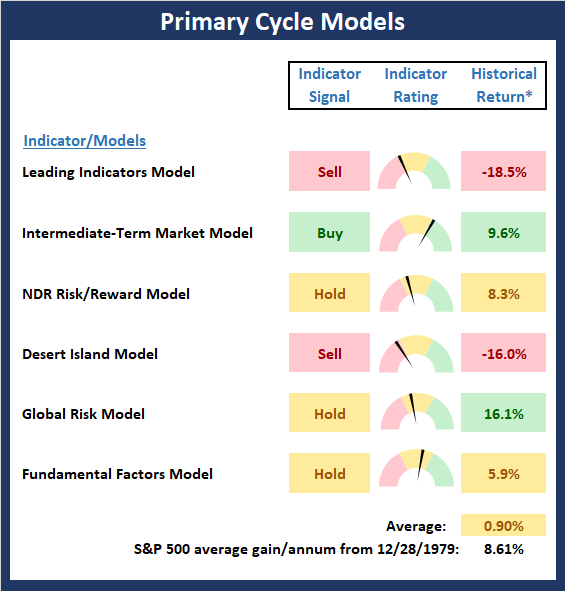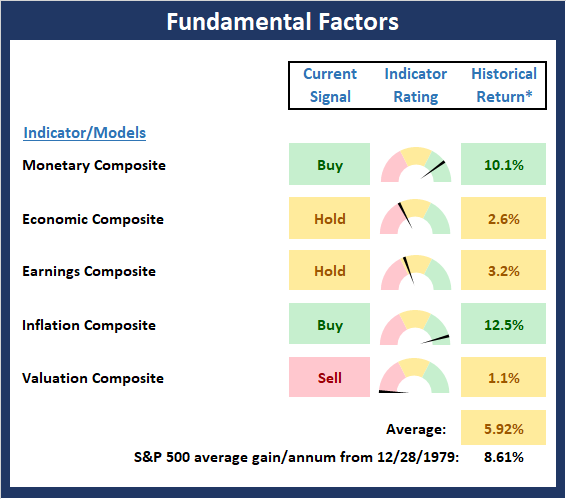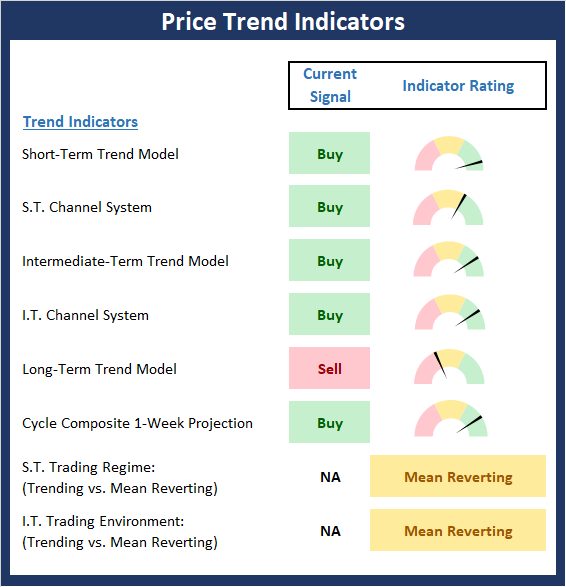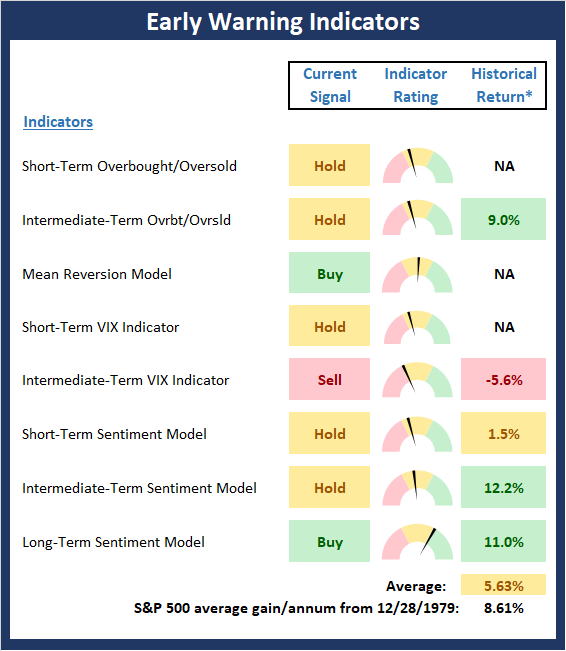Turning The Corner
It appears the general theme of the market these days is we have turned the corner in terms of the virus and the self-inflicted damage done to the economy. This is clearly good news. And to be sure, a collective sigh of relief is warranted.
In reviewing the slew of economic data that continue to flow, analysts seem to be concluding that we have seen the nadir in terms of the negative economic impact. After all, since the economy was purposefully stopped on a dime for a couple months and is now reopening, there is really only one direction the data can head - upward.
So, you can hardly criticize the bulls for celebrating the idea that the worst is behind us. In addition, we continue to receive encouraging news on the vaccine front. In fact, the last two weeks have begun with what can only be described as upbeat news on this front as "Operation Warp Speed" is in full swing. And the idea that a vaccine could be available this year looks to be gaining traction.
It Is Strange To See...
However, given the massive hit the economy has taken - you know, the biggest decline in data since the Great Depression (or worse) - it is still more than a little strange to see the S&P 500 off only -10.1% from its February peak and down just -5.77% on the year.
Stranger still to most is the fact that the NASDAQ 100 is off just -1.7% from its February 19 all-time highs and the ETF that tracks the tech-ladened index (QQQ) is up +8.3% in 2020. All the while, the smallcaps (IWM) and value stocks (VLUE) are down -15.4% and -18.5% on the year respectively and are off -18.1% and -20.8% from their highs.
Looking Ahead
By now, it is my sincere hope that readers recognize that stocks do not trade based on what is happening now, or what has happened in the past. As I've written a time or two, the stock market looks forward and is effectively a discounting mechanism for future expectations. Therefore, the idea that the economy is starting to turn the corner and that a vaccine that could return things to the "old normal" is definitely the stuff rallies in the stock market are made of.
The Hole is Deep
But... You knew, that was coming, right? As the Wall Street Journal reported last week, investors should keep in mind that the hole the economy needs to climb out of in order to return to normal is "very deep."
From my seat, this may be the most important point the market faces in the coming months. Sure, stocks can continue to celebrate the country's reopening and the idea that there is only one way for the economy to go from here. And I will certainly agree that the cyclical stuff deserves to play a little catch-up if everyone believes that the economy is done declining and now has nowhere to go but up.
Yet at some point, I can't help but think that the market may struggle with the actual economic data versus the hopeful expectations that have already been priced in.
In an article titled, "Spending Plunge Will Keep Weighing on US Growth," the Journal wrote what I feel is an excellent summary of the situation: "With more businesses starting to reopen, consumer spending looks as if it is starting to dig its way out of the hole caused by the coronavirus crisis. But the hole is very deep."
The Heard On The Street column penned by Justin Lahart on Friday argues while consumer spending has improved since April's record drop, we are still looking at an annualized decline close to 40%. Ouch.
Lahart's final point was that unemployment uncertainty is likely to also keep consumer spending from leaping back to the old normal. "Then there is the matter of the labor market. Economists expect that next week's employment report will show that millions more people lost their jobs in May and that the unemployment rate will rise even more. That will make many people reluctant to spend, and that reluctance won't go away until there are sure signs that the job market is improving and unemployment has begun to fall," Mr. Lahart opined.
It's a Matter of Degree
I guess what we're really talking about here is a matter of degree. As in the degree to which the economy is expected to recover in the next three to six months versus the degree to which the stock market indices have already recovered. In other words, will the economy really recover as much as the stock market indices are currently pricing in?
Sure, Microsoft (MSFT), which is up +16.8% YTD and is just -2.9% from all-time highs, looks like it will indeed grow earnings in 2020 and then produce healthy EPS growth in 2021 and 2022. And according to Ned Davis Research, the software maker's current P/E is actually below the five-year average (30.24 vs 31.97). As such, it is fairly easy to justify "Mister Softie's" current pricing. The same likely goes for the other big-cap COVID winners as well.
But the growth story for any industry that involves people congregating isn't nearly as encouraging. In reality, there won't be any growth in restaurants, airlines, movies, concerts, and sporting events. No, the real question is how deep the declines will be.
Some Caution Remains Warranted
Please understand that I love a good romp in the stock market as much as the next guy. And I am happy to jump on the "hope" bandwagon now that we are turning the corner. For a while, at least.
But for me, the bottom line is I remain deeply concerned that the stock market is writing checks that the economy won't be able cover in the appropriate time frame. So, from my seat, some caution remains warranted.
Weekly Market Model Review
Each week we do a disciplined, deep dive into our key market indicators and models. The overall goal of this exercise is to (a) remove emotion from the investment process, (b) stay "in tune" with the primary market cycles, and (c) remain cognizant of the risk/reward environment.
The Major Market Models
We start with six of our favorite long-term market models. These models are designed to help determine the "state" of the overall market.
There is one change to report on the Primary Cycle board this week. Our Intermediate-Term Market Model, which includes 39 technical indicators/models and is designed to be our primary indication of technical health, improved to positive. However, the weight of the evidence from the Primary Cycle board is mixed at best. As such, I believe that some caution remains warranted. In short, as the country moves into the re-opening stage, there is likely to be some uncertainty.

* Source: Ned Davis Research (NDR) as of the date of publication. Historical returns are hypothetical average annual performances calculated by NDR. Past performances do not guarantee future results or profitability - NOT INDIVIDUAL INVESTMENT ADVICE.
View My Favorite Market Models Online
The State of the Fundamental Backdrop
Next, we review the market's fundamental factors in the areas of interest rates, the economy, inflation, and valuations.
Once again, there are also no changes to the Fundamental Factors board this week. From my seat, it appears that the battle between a damaged economy and the monetary stimulus is likely to rage. While the Federal Reserve and Congress are pulling out all the stops and may have taken the worst-case scenario off the table, it is still unclear what the economic recovery will look like going forward.

* Source: Ned Davis Research (NDR) as of the date of publication. Historical returns are hypothetical average annual performances calculated by NDR. Past performances do not guarantee future results or profitability - NOT INDIVIDUAL INVESTMENT ADVICE.
View Fundamental Indicator Board Online
The State of the Trend
After looking at the big-picture models and the fundamental backdrop, I like to look at the state of the trend. This board of indicators is designed to tell us about the overall technical health of the current trend.
The Price Trend board continues to show improvement as another indicator flipped to green last week. In addition, I would expect the short-term trading regime indicator to uptick in the coming days. And while many, including yours truly, argue that stocks have become dislocated from future economic reality, the trend appears to be a friend to stock market investors.

NOT INDIVIDUAL INVESTMENT ADVICE.
View Trend Indicator Board Online
The State of Internal Momentum
Next, we analyze the "oomph" behind the current trend via our group of market momentum indicators/models.
The Momentum Board continues to experienced some flip-flopping among the indicators. However, the overall state of the board would appear to support the bulls at this point in time.

* Source: Ned Davis Research (NDR) as of the date of publication. Historical returns are hypothetical average annual performances calculated by NDR. Past performances do not guarantee future results or profitability - NOT INDIVIDUAL INVESTMENT ADVICE.
View Momentum Indicator Board Online
Early Warning Signals
Once we have identified the current environment, the state of the trend, and the degree of momentum behind the move, we then review the potential for a counter-trend move to begin. This batch of indicators is designed to suggest when the table is set for the trend to "go the other way."
The Early Warning board looks to remain stuck in no-man's land. However, it is hard to disagree with the idea that stocks are overbought from a shorter-term perspective (and are quickly becoming overbought from an intermediate-term view) and that the overall mood of the market may be reaching positive extremes. So, while the board is clearly neutral here, I will argue that the edge goes to the bears here for the coming week.

* Source: Ned Davis Research (NDR) as of the date of publication. Historical returns are hypothetical average annual performances calculated by NDR. Past performances do not guarantee future results or profitability - NOT INDIVIDUAL INVESTMENT ADVICE.
View Early Warning Indicator Board Online
Thought For The Day:
Opportunity is not a lengthy visitor. --Anonymous
Wishing you green screens and all the best for a great day,

David D. Moenning
Founder, Chief Investment Officer
Heritage Capital Research
Disclosures
At the time of publication, Mr. Moenning held long positions in the following securities mentioned: QQQ, IWM, MSFT - Note that positions may change at any time.
Leading Indicators Model: A group of indicators that have historically shown tendencies to lead the market at major turning points.
Intermediate-Term Market Model: A composite model (model of models) focused on trend and momentum indicators which has been designed to provide identify intermediate-term trading opportunities.
Risk/Reward Model: A model-of-models intended to provide an overall view of the state of the risk/reward environment. The model includes tape, monetary, and sentiment indicators as well as 7 big-picture market model readings.
Desert Island Model: If I was stranded on a desert island with access to only one market model to manage money with, this would be the model. The model is a comprehensive model-of-models comprised of trend, momentum, mean reversion, economic, monetary, sentiment, and factor-based indicators/models.
External Factors Model: A model-of-models designed to provide a reading on the "macro state" of the market environment. The model is comprised of indicators/models in the areas of various index yields, industrial production, investors sentiment, and historic volatility.
Short-Term Trend-and-Breadth Signal Explained: History shows the most reliable market moves tend to occur when the breadth indices are in gear with the major market averages. When the breadth measures diverge, investors should take note that a trend reversal may be at hand. This indicator incorporates NDR's All-Cap Dollar Weighted Equity Series and A/D Line. From 1998, when the A/D line is above its 5-day smoothing and the All-Cap Equal Weighted Equity Series is above its 25-day smoothing, the equity index has gained at a rate of +32.5% per year. When one of the indicators is above its smoothing, the equity index has gained at a rate of +13.3% per year. And when both are below, the equity index has lost +23.6% per year.
Channel Breakout System Explained: The short-term and intermediate-term Channel Breakout Systems are modified versions of the Donchian Channel indicator. According to Wikipedia, "The Donchian channel is an indicator used in market trading developed by Richard Donchian. It is formed by taking the highest high and the lowest low of the last n periods. The area between the high and the low is the channel for the period chosen."
Intermediate-Term Trend-and-Breadth Signal Explained: This indicator incorporates NDR's All-Cap Dollar Weighted Equity Series and A/D Line. From 1998, when the A/D line is above its 45-day smoothing and the All-Cap Equal Weighted Equity Series is above its 45-day smoothing, the equity index has gained at a rate of +17.6% per year. When one of the indicators is above its smoothing, the equity index has gained at a rate of +6.5% per year. And when both are below, the equity index has lost -1.3% per year.
Cycle Composite Projections: The cycle composite combines the 1-year Seasonal, 4-year Presidential, and 10-year Decennial cycles. The indicator reading shown uses the cycle projection for the upcoming week.
Trading Mode Indicator: This indicator attempts to identify whether the current trading environment is "trending" or "mean reverting." The indicator takes the composite reading of the Efficiency Ratio, the Average Correlation Coefficient, and Trend Strength models.
Volume Relationship Models: These models review the relationship between "supply" and "demand" volume over the short- and intermediate-term time frames.
Price Thrust Model Explained: This indicator measures the 3-day rate of change of the Value Line Composite relative to the standard deviation of the 30-day average. When the Value Line's 3-day rate of change have moved above 0.5 standard deviation of the 30-day average ROC, a "thrust" occurs and since 2000, the Value Line Composite has gained ground at a rate of +20.6% per year. When the indicator is below 0.5 standard deviation of the 30-day, the Value Line has lost ground at a rate of -10.0% per year. And when neutral, the Value Line has gained at a rate of +5.26% per year.
Volume Thrust Model Explained: This indicator uses NASDAQ volume data to indicate bullish and bearish conditions for the NASDAQ Composite Index. The indicator plots the ratio of the 10-day total of NASDAQ daily advancing volume (i.e., the total volume traded in stocks which rose in price each day) to the 10-day total of daily declining volume (volume traded in stocks which fell each day). This ratio indicates when advancing stocks are attracting the majority of the volume (readings above 1.0) and when declining stocks are seeing the heaviest trading (readings below 1.0). This indicator thus supports the case that a rising market supported by heavier volume in the advancing issues tends to be the most bullish condition, while a declining market with downside volume dominating confirms bearish conditions. When in a positive mode, the NASDAQ Composite has gained at a rate of +38.3% per year, When neutral, the NASDAQ has gained at a rate of +13.3% per year. And when negative, the NASDAQ has lost at a rate of -15.269% per year.
Breadth Thrust Model Explained: This indicator uses the number of NASDAQ-listed stocks advancing and declining to indicate bullish or bearish breadth conditions for the NASDAQ Composite. The indicator plots the ratio of the 10-day total of the number of stocks rising on the NASDAQ each day to the 10-day total of the number of stocks declining each day. Using 10-day totals smooths the random daily fluctuations and gives indications on an intermediate-term basis. As expected, the NASDAQ Composite performs much better when the 10-day A/D ratio is high (strong breadth) and worse when the indicator is in its lower mode (weak breadth). The most bullish conditions for the NASDAQ when the 10-day A/D indicator is not only high, but has recently posted an extreme high reading and thus indicated a thrust of upside momentum. Bearish conditions are confirmed when the indicator is low and has recently signaled a downside breadth thrust. In positive mode, the NASDAQ has gained at a rate of +22.1% per year since 1981. In a neutral mode, the NASDAQ has gained at a rate of +14.5% per year. And when in a negative mode, the NASDAQ has lost at a rate of -6.4% per year.
Short-Term Overbought/sold Indicator: This indicator is the current reading of the 14,1,3 stochastic oscillator. When the oscillator is above 80 and the %K is above the %D, the indicator gives an overbought reading. Conversely, when the oscillator is below 20 and %K is below its %D, the indicator is oversold.
Intermediate-Term Overbought/sold Indicator: This indicator is a 40-day RSI reading. When above 57.5, the indicator is considered overbought and wnen below 45 it is oversold.
Mean Reversion Model: This is a diffusion model consisting of five indicators that can produce buy and sell signals based on overbought/sold conditions.
VIX Indicator: This indicators looks at the current reading of the VIX relative to standard deviation bands. When the indicator reaches an extreme reading in either direction, it is an indication that a market trend could reverse in the near-term.
Short-Term Sentiment Indicator: This is a model-of-models composed of 18 independent sentiment indicators designed to indicate when market sentiment has reached an extreme from a short-term perspective. Historical analysis indicates that the stock market's best gains come after an environment has become extremely negative from a sentiment standpoint. Conversely, when sentiment becomes extremely positive, market returns have been subpar.
Intermediate-Term Sentiment Indicator: This is a model-of-models composed of 7 independent sentiment indicators designed to indicate when market sentiment has reached an extreme from a intermediate-term perspective. Historical analysis indicates that the stock market's best gains come after an environment has become extremely negative from a sentiment standpoint. Conversely, when sentiment becomes extremely positive, market returns have been subpar.
Long-Term Sentiment Indicator: This is a model-of-models composed of 6 independent sentiment indicators designed to indicate when market sentiment has reached an extreme from a long-term perspective. Historical analysis indicates that the stock market's best gains come after an environment has become extremely negative from a sentiment standpoint. Conversely, when sentiment becomes extremely positive, market returns have been subpar.
Absolute Monetary Model Explained: The popular cliche, "Don't fight the Fed" is really a testament to the profound impact that interest rates and Fed policy have on the market. It is a proven fact that monetary conditions are one of the most powerful influences on the direction of stock prices. The Absolute Monetary Model looks at the current level of interest rates relative to historical levels and Fed policy.
Relative Monetary Model Explained: The "relative" monetary model looks at monetary indicators relative to recent levels as well as rates of change and Fed Policy.
Economic Model Explained: During the middle of bull and bear markets, understanding the overall health of the economy and how it impacts the stock market is one of the few truly logical aspects of the stock market. When our Economic model sports a "positive" reading, history (beginning in 1965) shows that stocks enjoy returns in excess of 21% per year. Yet, when the model's reading falls into the "negative" zone, the S&P has lost nearly -25% per year. However, it is vital to understand that there are times when good economic news is actually bad for stocks and vice versa. Thus, the Economic model can help investors stay in tune with where we are in the overall economic cycle.
Inflation Model Explained: They say that "the tape tells all." However, one of the best "big picture" indicators of what the market is expected to do next is inflation. Simply put, since 1962, when the model indicates that inflationary pressures are strong, stocks have lost ground. Yet, when inflationary pressures are low, the S&P 500 has gained ground at a rate in excess of 13%. The bottom line is inflation is one of the primary drivers of stock market returns.
Valuation Model Explained: If you want to get analysts really riled up, you need only to begin a discussion of market valuation. While the question of whether stocks are overvalued or undervalued appears to be a simple one, the subject is actually extremely complex. To simplify the subject dramatically, investors must first determine if they should focus on relative valuation (which include the current level of interest rates) or absolute valuation measures (the more traditional readings of Price/Earnings, Price/Dividend, and Price/Book Value). We believe that it is important to recognize that environments change. And as such, the market's focus and corresponding view of valuations are likely to change as well. Thus, we depend on our Valuation Models to help us keep our eye on the ball.
Disclosures
NOT INVESTMENT ADVICE. The opinions and forecasts expressed herein are those of Mr. David Moenning and Heritage Capital Research and may not actually come to pass. The opinions and viewpoints regarding the future of the markets should not be construed as recommendations. The analysis and information in this report is for informational purposes only. No part of the material presented in this report is intended as an investment recommendation or investment advice. Neither the information nor any opinion expressed constitutes a solicitation to purchase or sell securities or any investment program.
Any investment decisions must in all cases be made by the reader or by his or her investment adviser. Do NOT ever purchase any security without doing sufficient research. There is no guarantee that the investment objectives outlined will actually come to pass. All opinions expressed herein are subject to change without notice. Neither the editor, employees, nor any of their affiliates shall have any liability for any loss sustained by anyone who has relied on the information provided.
Mr. Moenning of Heritage Capital Research is an investment adviser representative of Eastsound Capital Advisors, LLC, a registered investment advisor. The adviser may not transact business in states where it is not appropriately registered, excluded or exempted from registration. Individualized responses to persons that involve either the effecting of transaction in securities, or the rendering of personalized investment advice for compensation, will not be made without registration or exemption.
Mr. Moenning and Heritage Capital Research may at times have positions in the securities referred to and may make purchases or sales of these securities while publications are in circulation. Positions may change at any time.
The analysis provided is based on both technical and fundamental research and is provided "as is" without warranty of any kind, either expressed or implied. Although the information contained is derived from sources which are believed to be reliable, they cannot be guaranteed.
The author neither endorses nor warrants the content of this site, any embedded advertisement, or any linked resource. The author or his managed funds may hold either long or short positions in the referenced securities. Republication rights must be expressly granted by author in writing.
Investments in equities carry an inherent element of risk including the potential for significant loss of principal. Past performance is not an indication of future results.

